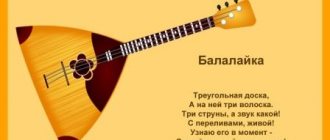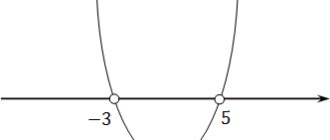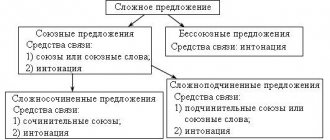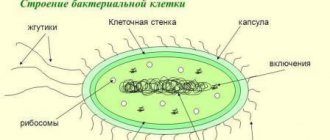Rhetoric lesson 3rd grade Topic: “Editing text”
- Primary consolidation
Group work
- Find from the text the answer to the question: WHEN AND HOW do birds fly away?
(Students read the text sentence by sentence. Highlight the main points with a colored felt-tip pen under the guidance of the teacher. Controversial points are discussed.)
BIRDS IN AUTUMN
Birdwatching in autumn is very interesting. This is the time of their departure to warmer climes. People say: “September gathers the birds on the road.” Swifts are the first to leave their native places. And the last ones are the ducks. Starting in September, cranes gather in flocks to fly on a long journey. With a beautiful guttural cry that carries far in the clear autumn air, the cranes say goodbye until spring. By the way they fly, you can predict what autumn will be like. If their flight is unhurried and measured, then autumn will be warm. The rapid departure of birds means cold and early autumn. Some birds fly to warmer regions alone. These are cuckoos, kingfishers, kites, hawks and falcons. But the majority still go on long journeys in flocks. Ducks line up in a diagonal row, lapwings form long chains, and cranes and geese fly in a wedge.
Geese leave their native land in late September - early October. People say: “Geese drag the winter on their tails, carry snow on their noses.”
Fizminutka
(Students repeat the teacher’s movements corresponding to the content in the text)
— We came to the autumn forest, collecting leaves for the herbarium. Oh, what a beautiful rowan leaf (we stretch), 2 oak leaves, 3 maple leaves, 5 birch leaves we will collect fallen from the ground (We crouch).
-How many leaves did we collect? (Question for attention)
5.Independent work in groups
-Study the text, highlight the main thing and tell it. Time criterion - no more than 2 minutes!
Drawing up a text plan with a discussion of the sequence.
PLAN:
- Appearance
- Migrations
- Nutrition
- Distinctive feature
- Remember which birds fly away alone? (from the first text “Birds in Autumn”)
(cuckoos, kingfishers, kites, hawks and falcons)
Work in groups - shorten the text and tell your classmates briefly according to the plan. Each group has different texts about birds.
.- Now let’s try to read the entire text in compressed form.
One student monitors the reading time using an hourglass, the rest monitor the content according to the plan.
— Were you able to save all the micro-topics in a compressed text?
Conclusions (students highlight the best work, point out shortcomings, reasons)
7. Lesson summary
— We learned about birds that migrate alone in winter. Unlike them, today we worked in groups. Let's try to evaluate our work, our personal contribution.
-Remember from the text the exposition “The Flight of Geese”: who flew ahead and who followed? (age and experience)
REFLECTION (school of geese)
Leader - The topic is clear, you can explain it to others
Experienced - The topic is well understood, you can shorten the text yourself.
Youth - You can shorten the text only together with your classmates
— Today in class we practiced using various text compression techniques. As A.P. Chekhov argued, “the art of writing is the art of abbreviation.”
Goals to follow the lesson from what the children said.
Application
BIRDS IN AUTUMN
Birdwatching in autumn is very interesting. This is the time of their departure to warmer climes. People say: “September gathers the birds on the road.” Swifts are the first to leave their native places. And the last ones are the ducks. Starting in September, cranes gather in flocks to fly on a long journey. With a beautiful guttural cry that carries far in the clear autumn air, the cranes say goodbye until spring. By the way they fly, you can predict what autumn will be like. If their flight is unhurried and measured, then autumn will be warm. The rapid departure of birds means cold and early autumn. Some birds fly to warmer regions alone. These are cuckoos, kingfishers, kites, hawks and falcons. But the majority still go on long journeys in flocks. Ducks line up in a diagonal row, lapwings form long chains, and cranes and geese fly in a wedge.
Geese leave their native land in late September - early October. People say: “Geese drag the winter on their tails, carry snow on their noses.”
CUCKOO
It's hard to imagine a forest without a cuckoo. Each of us has heard the loud “cuckoo” of the male and the characteristic gurgling trill of the female more than once. And we all know well that the cuckoo does not build nests, but lays eggs in other people’s nests. The cuckoo is a cautious and secretive bird. Not everyone saw her alive. And in flight it is so similar to a hawk that non-specialists constantly confuse them. Males differ from females only in color. They are predominantly gray in color, the back and wings are darker in tone, and the legs are orange. There are longitudinal alternating black and white stripes on the chest and belly. Females are more brownish-red in color, stripes almost all over the body, the cuckoo appears speckled. The length of the bird is up to 40 cm, weight 100 - 130 grams. The tail has a rounded shape, quite long - 18 cm. The length of the wing is 20 cm, and the wingspan is 60 cm. The eyes are large, the beak is slightly curved and quite strong. The cuckoo's fingers are tenacious, two are facing forward and two are facing back. Thanks to this, it moves deftly along tree branches.
The cuckoo is a migratory bird; for the winter it migrates to tropical Africa. But an interesting thing: most birds make their flights in flocks, but no one has seen flocks of cuckoos. In the fall they disappear imperceptibly, the older generation earlier, the younger generation later. They usually fly at night and, most likely, alone. Cuckoos feed on various insects, which they eat in large quantities almost all day long. Cuckoos benefit greatly by eating furry caterpillars coated in poison. Other birds ignore such treats.
KINGFISHER
This is a small bird with bright plumage: a dark blue back and a striped, blackish-blue top of the head combined with a bright orange belly. The beak of the common kingfisher is straight and long, with a noticeably protruding upper beak ridge. The wings are short (7-8 cm) and wide, the tail is short. Females are smaller than males. The bird settles along the banks of rivers, lakes, streams, ponds - bodies of water with clean and quiet running water.
The common kingfisher feeds mainly on small fish up to 6 cm in size. It also feeds on dragonfly larvae, other aquatic insects and invertebrates. Sometimes it eats earthworms, shrimp, and occasionally even small frogs. Sitting at his observation post, the kingfisher looks out for his prey. When the prey comes into view, the kingfisher rushes into the water, submerges slightly and snatches the fish. With prey in its beak it flies into a hole and then returns back.
It winters in the south where there are rivers that do not freeze during the winter. For example, in the North Caucasus, kingfishers stay all year round. In Turkmenistan they are found in winter. Kingfishers fly away from our strip relatively early, at the end of August. Some remain in the steppe zone until the end of September.
Most birds of the kingfisher family have never seen winter in their lives. Therefore, the assumption that its name is somehow connected with winter inspires little confidence. Although many believe that the kingfisher was named this way because it lays its eggs and nurses its offspring in winter. But it was not there! He does this exclusively in the summer months.
KITE
Kites belong to the genus of birds of prey and form the subfamily Accipitridae. A distinctive feature of kites from other birds of prey is the shape and size of the beak - it is hook-shaped and small. The wings of the kite are long and wide, the tail is long and notched. The body length of the Kite reaches 70 cm.
The kite winters in Africa and South Asia. Many populations of kites conduct seasonal migrations - birds from the northern regions go to warm places during the winter. Kites live in forests, steppes and semi-deserts, in the mountains and on plains, mainly near water bodies.
The Kite nests on trees, cliffs and rocks. Kites look out for prey by hovering in the air. Food for the Kite is small rodents, reptiles, amphibians, carrion and garbage, sometimes small fish and birds. . They do not refuse carrion, and sometimes even attack birds, but they rarely fly out to hunt.
He is clumsy, hardly brave and rather lazy. But the flight of a kite is a breathtaking picture. The kite is able to be in a state of soaring for a long period of time - for example, the kite is able to soar in the air for a quarter of an hour (that is, it will not flap its wings once in fifteen minutes)
Hawk
The total body length of this hawk can reach sixty-eight centimeters, and its weight can reach one and a half kilograms. The color of adult hawks on the ventral side of the body has a whitish tint, which is distinguished by transverse brown stripes.
The dorsal side of the body is grayish-brown in color. These are birds of prey. Hawks have a slender body. The wings of hawks are short and wide, bent. The feet of these birds are long and clawed. These paws are necessary for hawks to kill their prey. The beak is hooked and very sharp.
The habitat of hawks is shrubs and forests (coniferous and deciduous forests). For the winter, these birds fly south.
Since ancient times, hunting migratory quails with these birds has been practiced in the autumn season. They are caught in the fall. They teach hunting over just a few days. With the end of the autumn hunting season, sparrowhawks are usually released into the wild.
All small birds know well what a merciless enemy they are dealing with, so they try to hide as soon as the silhouette of a hawk appears on the horizon. Some birds fall to the ground and hide, others panic and hide in mouse holes, while others rely on their wings. But it is difficult to hide from a hawk, and often it catches two unfortunate birds at a time. Swallows really interfere with his hunting. They fly after the robber and with loud cries notify all the birds of his appearance.
FALCON
The falcon is a bird of prey and a very good flyer. These birds almost never take prey from the ground. Their element is air. And they, as experts say, “beat” the prey, that is, they rush at the bird from above, dive and grab it with their paws. Sometimes, flying low, they scare a bird sitting on the ground, force it to fly, then quickly rise above their prey and rush on top of it. Very rarely does anyone manage to escape from a falcon; even such flyers as swallows and swifts do not escape.
The falcon has everything adapted for hunting in the air. Here a falcon flies past us - strong, broad-chested, with hard, bulging muscles, with long and sharp wings, with powerful, steeply curved claws. Even its feathers are hard and pressed tightly to the body so as not to interfere with flight.
From primitive times to this day, the tamed falcon remains the most devoted hunter to man, unlike many other predators. The effectiveness of falcon hunting is explained by the capabilities that nature has endowed them with: acute vision - the falcon notices prey in the sky a kilometer away, and on the ground a hundred meters away.
Noble falcons usually choose nesting sites high from the ground - on the tops of trees, high structures, in rock crevices and occasionally on the ground.
Falcons live everywhere except in the Arctic regions. Different species of these birds occupy different habitats. Falcon is a migratory bird. During her life, she manages to travel around the world, flying to America, Europe, Asia and Africa
Rhetoric lesson in 5th grade. Topic: “Reading is the best teaching”
Rhetoric lesson in 5th grade
Topic: “Reading is the best teaching”
Goals:
reveal the features of reading as a type of speech activity in order to make it more effective for the reader; introduce ancient books, check the effectiveness of your own reading.
Tasks:
to activate independent statements by schoolchildren, to take into account their reading experience, to draw their attention to the role of books in the life of a thinking person.
Lesson type
: learning new things, forming knowledge
Equipment:
textbooks, slides with illustrations, a fragment of the cartoon “Twelve Months”, an exhibition of favorite books.
During the classes
- Articulation warm-up.
Hello guys! I'm glad to see you. We begin our rhetoric lesson according to tradition with a speech warm-up. Please sit up straight. Today we really need the active work of the tongue, lips, and palate to pronounce sounds more clearly. Let's do articulation exercises “Ring”, “Sting”, “Hedgehog”, “Don’t break your tongue” (on page 136)
- Teacher's opening speech.
We continue the lesson in a good mood, because your friends and favorite books are with us. On our bookshelf we can see books by different authors: ____
- Conversation
What do you think the topic of our lesson today will be related to?
Of course with a book.
We will talk about reading as a type of speech activity, check whether we can read effectively and profitably, and generally learn a lot about books. Open the textbook on page 134. The topic of the lesson will be the words of A.S. Pushkin “Reading is the best teaching.” What do you think the poet meant by these words? Let's read the opinions of other authors and comment on what they meant. - A little bit of history.
Yes, guys, as soon as a person learned to read (and this happened not so long ago), books became companions of his life.
Tell me, have books always looked like this?
Of course not. (Fragments of the presentation about clay tablets, about the Library of Alexandria [we read a fragment from the book by A.F. Losev “Plato. Aristotle. Page 134], about ancient books.
- Name communicative task
readings (slides will help you)
Get knowledge
Enjoy
Learn to do something
Let's write down the resulting diagram in a notebook.
Tell me, what publications do you read to achieve this or that goal?
- A story about the alphabet and punctuation marks.
We realized that books play a big role in a person’s life because they perform different functions.
What special signs when reading help us understand what is written?
ABC, alphabet or initial letter (read the text of exercise 183), punctuation marks.
Who can remind me of a case when a person’s life depended on one comma?
(Fragment of the cartoon “Twelve Months”) - Practical work.
Can you read?
Perhaps everyone who went to school will answer this question in the affirmative.
Many will say: “Is it worth asking such questions to literate people?” But the German poet Goethe wrote: “These good people have no idea how much work and time it takes to learn to read. I myself spent 80 years on this and still cannot say that I have completely achieved my goal.” So what does it mean to be able to read?
(Understand what the text says, what its main idea is, how the author reveals it).
Now let's check if you can read.
We read the text of exercise No. 171 “A language understandable to everyone” to ourselves for 2-2.5 minutes. The textbooks were closed.
Answer the following questions in your notebooks:
Who is the author of the text? I.N. Gorelov
— 5%
Name of the text. A language that everyone understands -
5%
How many parts does it have? 4
— 5%
What is the text about? About communication N.N. Miklouho-Maclay and the native
— 10%
What is his main idea? You can communicate and understand each other not only with the help of words, but also with the help of sign language, facial expressions, pantomime
— 25%
Of course, you won’t remember the text by heart and in all its details the first time; if you scored less than 50%, you will have trouble understanding the text.
- Instruction for performing d/z.
So, what was our lesson today? About the type of speech activity reading.
We understood why books are needed.
We found out what ancient books were like.
We determined our own level of comprehension of the text.
We reminded you what signs help you comprehend what you read.
In the next lessons we will talk in more detail about different types of reading; in traditional lessons on Slavic writing we will learn about the history of the alphabet. Those. Our conversation about reading and books will continue.
- D/z
1) For those who have mastered the text less than 50%, read our newspaper and get ready to be told about the article that you like best.
2) Everyone else according to ex. 177 compose a “Memo for the Reader”




